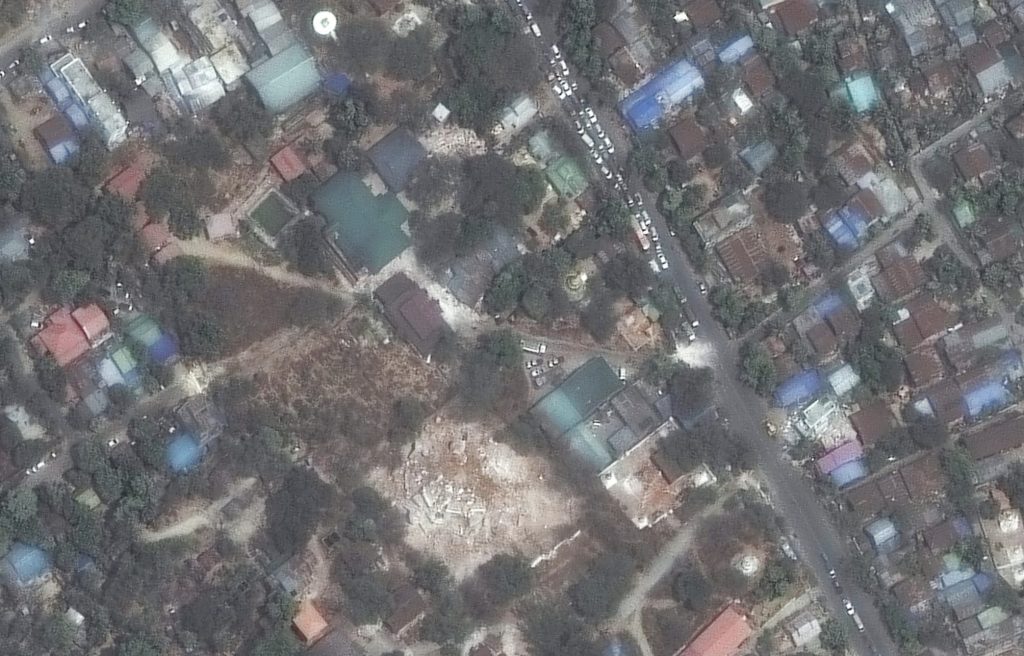
Powerful Earthquake in Myanmar Causes Fatalities and Extensive Damage to Cultural Heritage Sites

Massive Earthquake in Myanmar Devastates Lives and Cultural Heritage
On Friday, March 28, 2025, a catastrophic 7.7-magnitude earthquake struck Myanmar, killing approximately 2,700 people and injuring thousands more. The quake’s impact was particularly severe in central Myanmar, reaching into neighboring Thailand and leaving a wake of destruction that devastated homes, infrastructure, religious sites, and invaluable cultural heritage.
Widespread Structural and Cultural Destruction
Preliminary damage reports indicate that nearly 3,000 structures were affected. Among them were 95 Buddhist pagodas and stupas and 50 mosques, according to Myanmar’s shadow government, the National Unity Government (NUG). The earthquake has worsened the country’s already dire humanitarian crisis, which has been compounded by civil conflict and political instability since the 2021 military coup.
Mandalay: A City of Cultural Loss
Mandalay, Myanmar’s second-largest city and famed for its golden Buddhist architecture, suffered extensive damage. One of the most visible casualties was the historic Mandalay Palace. The Si Shay gateway and a clock tower within the palace fell, according to state-run media broadcasts. Originally established in 1857 and rebuilt after World War II, the palace stands as a symbol of Myanmar’s royal heritage.
The 200-year-old Me Nu Brick Monastery in Mandalay was reportedly destroyed, with images showing almost complete collapse. The New Masoeyein Monastery and at least 24 others in the city were also damaged or leveled, according to reports from the Burma Human Rights Network.
Destruction During Holy Observances
Tragedy struck numerous Muslim communities who were attending Ramadan prayers when the earthquake hit. Several mosques collapsed during the services, and some reports suggest up to 700 worshippers perished. In Taungoo, a town southeast of the capital, a survivor recalled losing multiple family members who were trapped in mosque rubble. Despite the tragedy, on April 1, survivors gathered for Eid al-Fitr prayers at sites where their mosques once stood.
The damage highlights a longstanding concern raised by human rights groups, who have reported systematic neglect of Muslim religious sites across the predominantly Buddhist country, citing difficulty in obtaining permits for maintenance.
Threats to UNESCO World Heritage Sites
Myanmar is home to several UNESCO World Heritage sites, including the ancient city of Bagan, which contains nearly 3,600 Buddhist monuments dating from the 11th to 13th centuries. While full assessments are still pending, local sources report at least six pagodas in Bagan have sustained damage. In a 2016 quake of lesser magnitude, dozens of Bagan pagodas crumbled.
Another ancient site potentially affected is the Pyu Ancient Cities, consisting of archaeological remains from Myanmar’s earliest urbanized civilization, dating as far back as 200 BCE. These cities — Halin, Beikthano, and Sri Ksetra — lie within the earthquake’s impact radius, though the extent of damage remains unclear.
The Shwe Sar Yan Pagoda, one of Myanmar’s oldest religious structures, built between 800 and 1200 CE, also experienced significant damage when the tip of its iconic golden spire broke off and plummeted to the ground, a moment captured in video shared widely online.
National Museum Damage and Institutional Challenges
Inside the National Museum in Naypyidaw, Myanmar’s capital, journalists from Agence France-Presse witnessed ceilings collapsing and walls cracking as the quake hit. This underscores not only the gravity of the disaster but also the vulnerability of Myanmar’s public institutions.
Humanitarian and Cultural Response
Cultural organizations such as the World Monuments Fund (WMF) have expressed condolences and concern. The WMF stated it is actively seeking information from local partners and preparing to offer assistance for the preservation and restoration of imperiled heritage sites.
UNESCO, meanwhile, has yet to officially comment on the condition of the nation’s heritage landmarks.
A nation in chaos, Myanmar’s ability to respond effectively is constrained by the ongoing civil war between the ruling military junta and opposition forces. Despite the disaster, reports suggest that the military continues airstrikes in some earthquake-impacted areas, hampering relief operations. In contrast, resistance groups have announced a ceasefire to facilitate aid efforts.
Conclusion
This earthquake dealt an unprecedented blow to Myanmar’s architectural and cultural landscape, compounding an already extensive humanitarian catastrophe. As the country continues to reel from conflict and political repression, the loss of historical and religious landmarks marks a poignant reminder of what is at stake — not only lives and homes, but centuries of cultural legacy that define a nation’s identity. The international community’s support — both humanitarian and heritage-focused — is urgently needed to help Myanmar recover and rebuild.